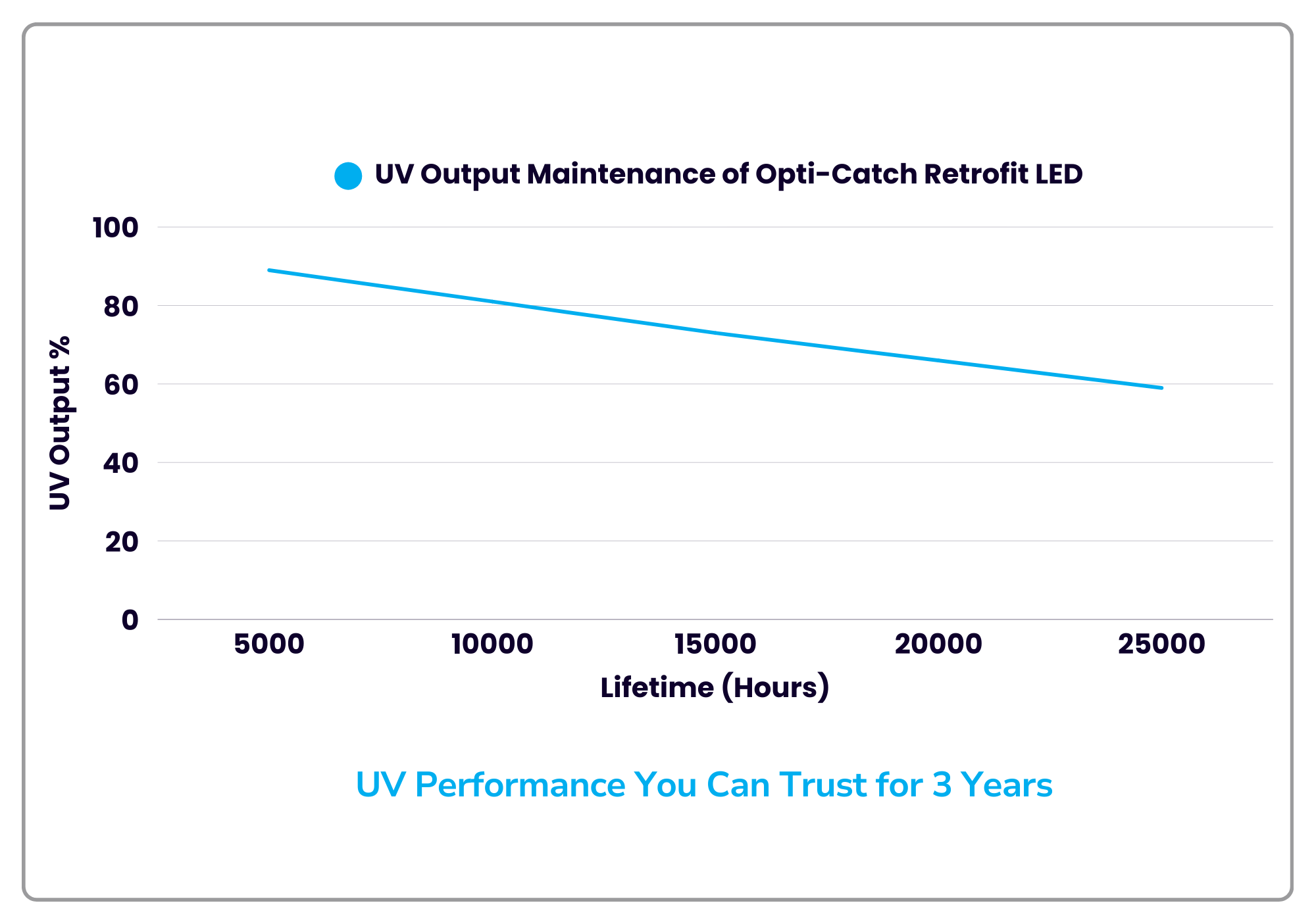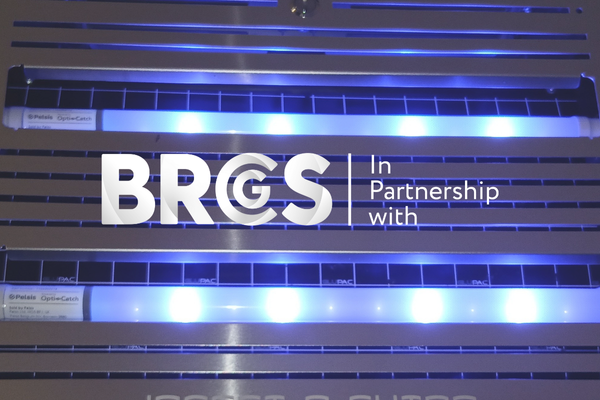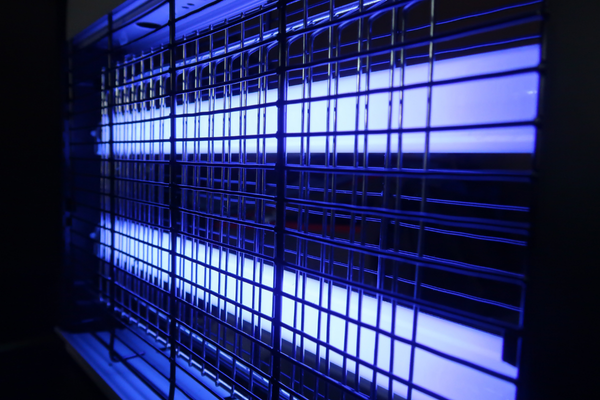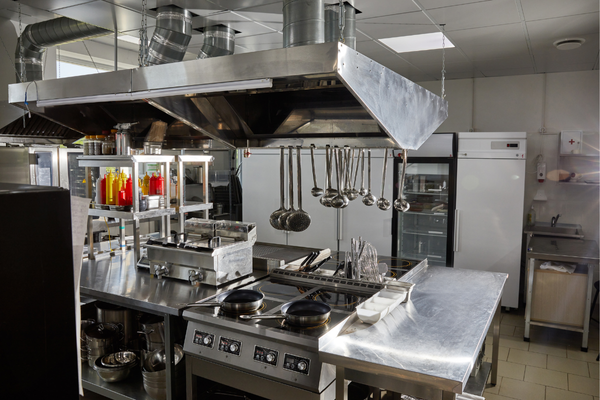Many facilities are considering switching to LED insect traps but worry whether they will perform as well as traditional fluorescent insect traps. With growing interest driven by cost savings, sustainability goals, and future regulatory phase-outs of fluorescent lamps, it’s natural to ask: Do LED traps attract flies as effectively as fluorescent ones? In this post, we’ll explore how insect light traps work, compare LED and fluorescent technologies, and explain why LEDs like Opti-Catch are rapidly becoming the new standard in pest control lighting.

Insect light traps attract flies and other pests primarily using UV-A light, which is most visible and appealing to these insects. Research shows that flies are especially attracted to wavelengths peaking around 368 nm, which falls in the UV-A spectrum.
Traditionally, insect light trap bulbs using fluorescent technology have been the go-to because they emit a strong UV light in the right range. This consistent UV output has made fluorescent lamps effective in luring flies and reducing pest populations.
Advancements in LED pest control lamps have made it possible to produce UV light in the precise wavelength range that attracts flies. However, not all LED lamps are created equal - many LEDs fall short of matching the intensity and effectiveness of traditional fluorescent lamps.
It’s crucial to do your research and choose an LED solution that is specifically designed for insect attraction and backed by independent fly catch data demonstrating its performance.
With the right LED technology, industries can confidently explore the switch for better energy efficiency, longer lamp life, and environmental benefits without compromising on pest control effectiveness.
Many LED insect light traps available today lack independent lab testing to validate their effectiveness in attracting and catching flies. Without verified data, it can be challenging to assess whether these products perform on par with fluorescent lamps.
Opti-Catch UV LED lamps have been subject to independent research, which found a 10% increase in fly catch rates compared to traditional 15W fluorescent lamps. This evidence indicates that when designed and tested properly, UV LED traps can match or exceed the performance of fluorescent options.
.png)
When assessing LED insect light traps, two factors are especially important: rated life vs warranty and independent fly-catch data.
Some LED lamps claim a three-year lifespan but only offer a two-year warranty. That gap can be a red flag - if failures occur in year three, you may not be covered. In contrast, fluorescent lamps rarely fail within their typical 12-month service life.
Quality also varies more with LEDs than with fluorescents, so performance can differ significantly between brands. This makes independent comparative testing essential. Always look for data showing the LED catches at least as many flies as a fluorescent equivalent; otherwise, there’s a risk of reduced control, especially in sensitive environments like food production.

LED insect traps are far more energy efficient, offering up to 60–70% savings on electricity compared to fluorescent lamps. Longer lamp life means fewer replacements, reducing downtime and labor costs.
This makes LEDs a more cost-effective pest control solution over the long term.
The Opti-Catch lamp typically pays for itself in 12 months. Try our handy savings calculator to see what you could save.
One of the easiest ways to upgrade is to use LED retrofit lamps in your insect traps. They fit into existing fluorescent fixtures and avoid the unnecessary cost of replacing entire units.
Before switching, ask your pest control provider about:
Many find the pest control retrofit LED upgrade a simple, straightforward, easy lamp swap with big benefits.
Yes - but with an important distinction. Opti-Catch retrofit UV LED lamps not only match, but actually exceed the performance of traditional fluorescent lamps. Independent testing has verified a 10% increase in fly catch rates compared to standard 15W fluorescent tubes.
However, it’s important to note that not all LED insect light traps or retrofit lamps achieve the same results. Performance varies widely between brands, so always look for verified fly-catch data when selecting an LED solution. Beyond attraction power, LEDs also offer energy savings, longer lifespan, and environmental safety benefits.
Yes, specifically designed UV LED lamps attract flies as effectively as fluorescent lamps. However, it is important to note that performance can vary and it is recommended that you assess the independent fly-catch data
LED lamps typically last 20,000–30,000 hours - 2-3 times longer than fluorescents.
Initial lamp cost can be higher, but energy and maintenance savings usually offset this over time. The Opti-Catch lamp typically pays for itself in 12 months. Try our handy savings calculator to see what you could save.
Not all LED solutions are the same. Full LED insect light traps are self-contained units designed specifically for LED technology. LED retrofit lamps, like Opti-Catch, are designed to replace fluorescent tubes in most standard traps, but they are not compatible with every model. Opti-Catch retrofit LED lamps integrate with single, twin, and triple 18” 15w switch-start systems. Please contact our team or your pest control officer to verify compatibility.
Talk to your pest control provider about Opti-Catch LED retrofit options today and see how much you could save with our energy savings calculator.
.png)
Results from Pest Tech’s Fastest Retrofit Challenge reveal how effortless it is to upgrade insect light traps with Opti-Catch LED lamps. Technicians achieved retrofit times under 20 seconds, reinforcing the speed and practicality of lamp replacements over full-unit changes.
See Results
As LED technology becomes standard in insect light traps, material choice matters more than ever. Independent research reveals that glass-bodied, FEP-coated lamps offer superior UV performance and safer operation compared to plastic alternatives, protecting food sites from contamination.
Read More
As more facilities consider switching to LED insect light traps, questions remain about performance. Independent testing shows Opti-Catch retrofit UV LED lamps don’t just match - they outperform fluorescent lamps, while delivering energy savings, longer life, and sustainability benefits.
Read More.png)
LightingEurope has requested an extension to RoHS exemptions for UV fluorescent lamps, securing their use in insect light traps until at least 2028. Despite the extention, Opti-Catch retrofit LED lamps already deliver energy savings and sustainability benefits - without replacing existing traps.
Read More
At first glance, LED might seem like an environmentally friendly solution. But switching to LED isn't automatically “green.” Many LED traps on the market today require completely new units to be installed. Discover how retrofitting with LED supports circular economy goals and avoids unnecessary waste.
Read More.png)
With growing interest in LED alternatives for insect light traps, it’s essential to distinguish between facts and assumptions. This post breaks down the current regulations, clarifies confusion surrounding the 2027 exemption, and outlines how retrofit LED lamps can offer a balanced approach.
Read More
Discover why food manufacturers are switching to LED insect light trap lamps, even without a ban. This practical guide explains the benefits of retrofitting, from improved fly catch and lower energy use to audit-ready performance, all without replacing existing equipment or disrupting operations.
Read More
Explore how UV fly traps work to control flying insects in commercial and domestic environments. Learn the science behind UV attraction, how these traps capture flies, and why they’re a clean, chemical-free solution for effective pest management.
Read MoreFill out the contact form below to enquire